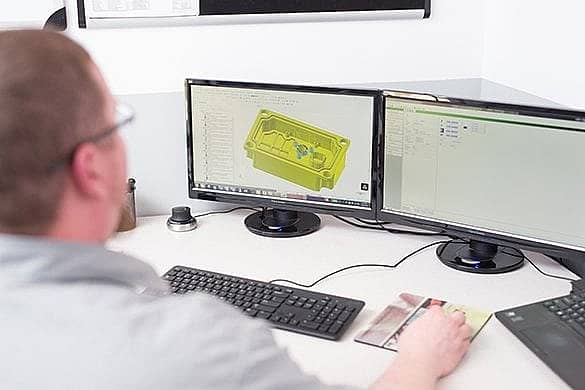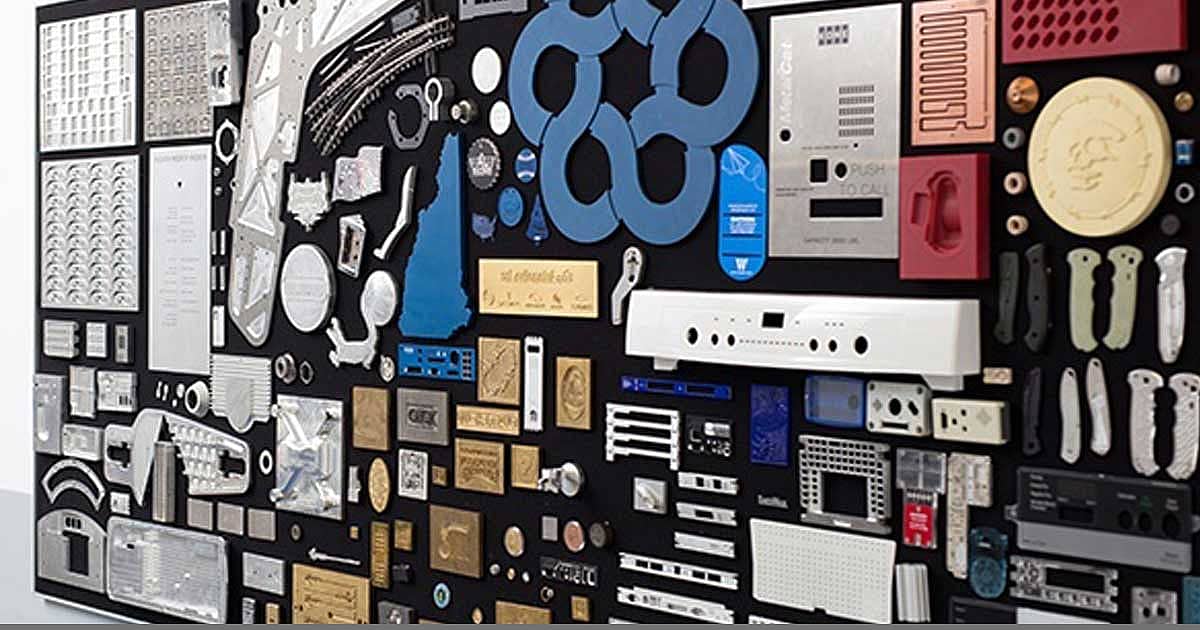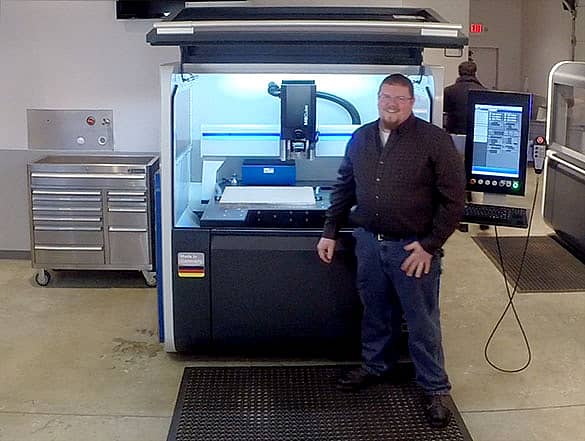There are very few things that you can look at today that has not passed through a machine shop on some level. So, a machine shop career can be both interesting and rewarding.
Just a few of the parts that may present themselves in the span of a machine shop career. Can you spot the F18 ejector seat part, the knife handles or the swizzle stick mold?
Answers:
F18 Ejector Seat

Knife Handles

Molds

I am sitting in a hotel room right now so let’s look at some examples. This laptop, my cell phone, the remote for the TV, the TV itself that’s allowing me to watch Monday Night Football right now, the microwave, the trash barrel – all of these things have parts that are molded. All of these molds require machining. The desk chair that I am sitting in right now has machined parts. The rental car out in the lot has too many machined parts to name. The knobs on the bureau, the lamps, the alarm clock. OK, you get the point. In my machine shop career I have worked for two tool and die shops that made molds for plastic injection molding; I worked in a maintenance machine shop for a power company that machined 8’ diameter pump housings and 27’ long pump shafts along with map brackets and any other parts the field techs needed; I worked for a company making parts for benchtop educational milling machines; I worked for a machine shop that machined nothing but man-made sapphire (interesting stuff by the way); I worked for a company that produced bridge and communications systems for the U.S. Navy, and I worked in a machine shop that made parts for commercial printers. I also did a short stint in a standard job shop. I know, I know you get the point. I just love talking about myself. My point is that no matter what your interests are you can find a shop that takes part in the finished product. There are so many different machine shop career paths available to anybody willing to get their hands dirty and deal with a sliver or two.

Machine Shop Career – How to Choose Your Path
My first piece of advice is HOLD YOUR HORSES! No matter what path you want to take and no matter what vision you have of your machine shop career do yourself (and your future coworkers) a favor and start with the basics. I will be writing another blog in the near future that will explain some of the basic things you will see and experience in the machine shop. So at the very least when you walk out there with your clean hands, nicely ironed khakis and goofy looking safety glasses you can hold an intelligent conversation with the old barnacle behind the engine lathe. Your first stop on the path to your machine shop career should be one of two places – a machine shop program at a technical college or an entry-level job in a machine shop that is willing to teach you the trade. As soon as I graduated high school I entered an apprenticeship program which paid my tuition at the local tech college. You can’t all be as cool as I am, and that’s OK … I set the bar high. The fact of the matter is this is one situation where you want to start from the ground floor. There are so many things that you need a firm understanding of before you can be a competent machinist that you won’t get by skipping past the basics.
One thing you will discover quickly is that there is no substitute for industry experience. That is not unique to the world of machining, but since this is a machining blog I don’t care. School will teach you many of the skills you need to succeed, but it’s that grumpy old bastard who hates his job that will polish you to a high sheen. The industry right now is in desperate need of KNOWLEDGABLE machinists. Go through school and sharpen your skills on the engine lathe, Bridgeport and bench grinders (as well as hobbs, drill presses and broaches) for a while … and THEN it’s time to really choose a path for your machine shop career.
Manual vs. Automated in a Machine Shop Career
There are many different directions to go. For the longest time I preferred manual machining. My abilities and knowledge on the manual machines afforded me respect from the old timers that a lot of my young counterparts never enjoyed. It allowed me to truly decide what I WANTED to do and where I wanted that to bring me. I know what you are asking yourself … and no, I didn’t put all those years in so I could write these fantastic blogs. This is just the icing on the cake. You’re welcome. Really though, once you build a solid base the sky is the limit. You can stay in manual machining, it is a dying breed and pretty soon will probably earn as much or more than a CNC programmer. None of the young kids want to turn handles anymore, and it really is a shame because the best programmers are the guys who never wanted to program. You can specialize in CNC lathe, swiss screw, CNC milling, four or five axis milling with live tooling. There is so much new technology out there that you will never run out of new things to learn. You can go towards engineering in CAD/CAM design, you can program as we have discussed, and you can start as an operator and earn your way up the ladder. The machining world is your metallic oyster.
As usual I ramble. I love this stuff, I can’t help it. I hope that you can follow my advice and find yourself in the same position. In short, put your time in. Learn your trade. Build a good base and there will be nothing standing in your way. Don’t sell yourself short, just trust in the numbers. I promise they don’t lie.






